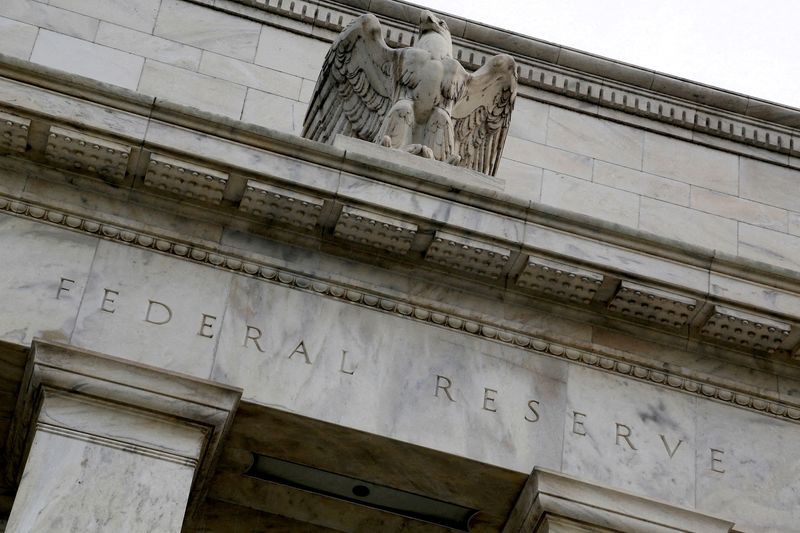Fed policymakers see interest rates higher, for longer
2022.12.14 14:30
[ad_1]

© Reuters. FILE PHOTO: An eagle tops the U.S. Federal Reserve building’s facade in Washington, July 31, 2013. REUTERS/Jonathan Ernst/File Photo
By Ann Saphir
WASHINGTON (Reuters) – Federal Reserve policymakers expect to raise U.S. interest rates further, and keep them high for longer, than earlier anticipated, signaling Wednesday that their efforts to squash high inflation will likely mean a bigger rise in unemployment and a possible recession.
The Fed’s latest quarterly summary of economic projections shows U.S. central bankers see the policy rate, now in the 4.25%-4.5% range after Wednesday’s 50-basis-point increase, at 5.1% by the end of next year, according to the median estimate of all 19 Fed policymakers.
In September they thought 2023 would end with the Fed policy rate at 4.6%.
The rate is then seen dropping to 4.1% in 2024, the projections show, and hitting 3.1% in 2025. Forecasts from September had anticipated rates would be slightly lower.
Meanwhile inflation by the Fed’s preferred measure – the personal consumption expenditures price index, currently running at 6% – is expected to cool to 3.1% in the final quarter of next year and to 2.5% by the end of 2024, the projections show.
That’s slower progress toward the Fed’s 2% inflation goal than seen in September, when policymakers expected inflation to register 2.8% at the end of 2023 and 2.3% at the end of 2024.
Meanwhile policymakers expect their interest-rate hikes to push the unemployment rate, now at 3.7%, to 4.6% in the final quarter of 2023, and stay there through 2024. Three months ago, the jobless rate was seen rising to 4.4%.
By one measure, known as the Sahm Rule for former Fed staffer Claudia Sahm, an increase of that magnitude in the unemployment rate likely signals a recession.
In any event, assuming a relatively stable labor force, an increase of that size would swell the ranks of the unemployed by more than a million people.
Wednesday’s projections show Fed policymakers have become more pessimistic about the outlook for economic growth, with a median projection for GDP growth next year of 0.5%, versus September’s expectation for 1.2%. Two Fed policymakers see the economy shrinking next year.
[ad_2]
Source link








